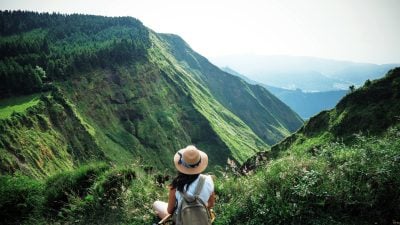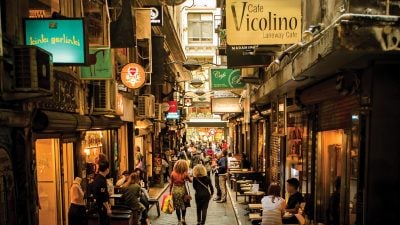Home / Australia & South Pacific / Australia vs New Zealand: Whic…

Australia vs New Zealand: Which Iconic Destination is Right for You on a South Pacific Vacation?
For people who don’t hail from Downunder, it can be a bit hard to parse between Australia and New Zealand on a South Pacific vacation. Not that anyone mistakes one destination for the other, but these countries are like siblings, located close to each other, with similar cultures and unforgettable landscapes that define them. They jockey with each other for sporting supremacy on the cricket pitch and rugby field, and simultaneously lay claim to inventing food items like the Pavlova and the Flat White. When deciding between an Australian vacation and a New Zealand vacation, it’s hard to pick the right destination for you without some more information about what makes these nations stand apart.
So for the sake of clarity, I’ve put together a comparative guide to Australia and New Zealand, discussing their differences in landscape and climate, cost, landmarks, city life and food, and available activities. Hopefully it gives you a better sense of what differentiates these countries and helps you decide which one is best for you on your upcoming South Pacific vacation.
Landscape and Climate
Both Australia and New Zealand have some of the most stunning landscapes in the world. While they differ a lot in the specifics of their geography, they are both the envy of a lot of nations around the world.
In general terms, Australia is red dusty desert with a coastal fringe of greenery. The cities are located on the coasts, mostly in the south and east. There are some tropical regions in Australia, located at the Top End of the Northern Territory and in northern Queensland, but for the most part, Australia is relatively dry.

New Zealand is much greener than Australia. It’s more mountainous than Australia (although Oz does have some mountains in the south and southeast, namely the Blue Mountains), and is defined by the fjords that crisscross the nation, as well as the mountains and glaciers that make it such a picture of imposing geography.
New Zealand’s greenery is largely dependent on the country’s weather, which is wetter and more temperate than Australia. New Zealand has a maritime climate, which means that its weather is largely affected by ocean conditions, while Australia has a continental climate and is generally more self-regulating when it comes to weather conditions. New Zealand regularly gets snow in the higher altitude regions, while snow is restricted to winter in the mountains of Australia. Australia is warmer than New Zealand, with a summer average of 30°C and winter average of 15°C. New Zealand, is a touch cooler, with a summer average around 20 to 25 degrees and a winter average around 12°.
Both countries offer milder climates than much of North America and Europe, so Globetrotters will be treated to manageable temperatures even if they choose to visit in the winter. As well, both landscapes are gorgeous, so it’s a little ridiculous to say one country outdoes the other in terms of beauty. For simplicity’s sake, if you’re looking for warm beach-going weather, Australia is your better option, while if you want to experience a more temperate climate and mountainous terrain, you should head to New Zealand.
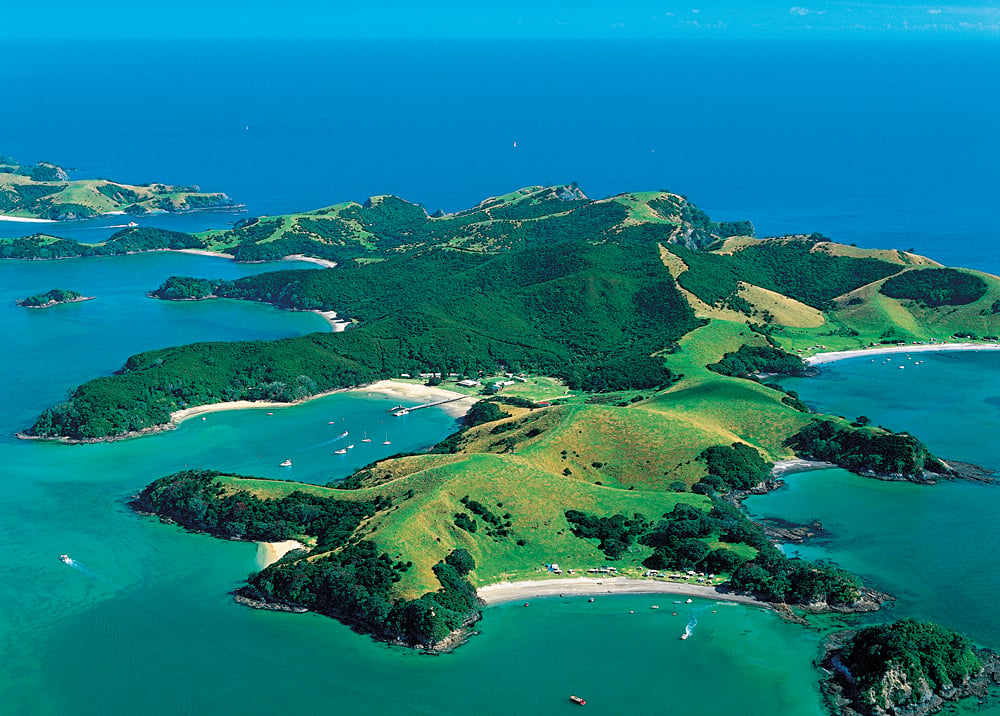
It’s also important to keep in mind the vast difference in size between the two countries. Australia is around 30 times larger than New Zealand, so if you’re wanting to see the whole country in one trip, you’ll have a harder time doing that in Australia than New Zealand. In Australia, you’re best to stick to specific regions of the country, while it’s possible to traverse the entirety of New Zealand on one South Pacific vacation.
Expenses and Infrastructure
While Australia and New Zealand are on the higher end of costs when it comes to international destinations, they’re still relatively comparable to North American and Western European prices, and can be cheaper in the lower seasons.
In terms of accommodations, Australia is generally more expensive than New Zealand. You’ll find the highest costs in the major cities of Sydney and Melbourne, while smaller cities like Perth and Adelaide will be more affordable. A three-star hotel in Sydney in the low season will generally cost you around $130CAD, while that price will jump to around $190CAD a night in the high season. Comparatively, in Auckland, a similar three-star hotel will generally cost $110CAD in the low season and $160CAD in the high season.
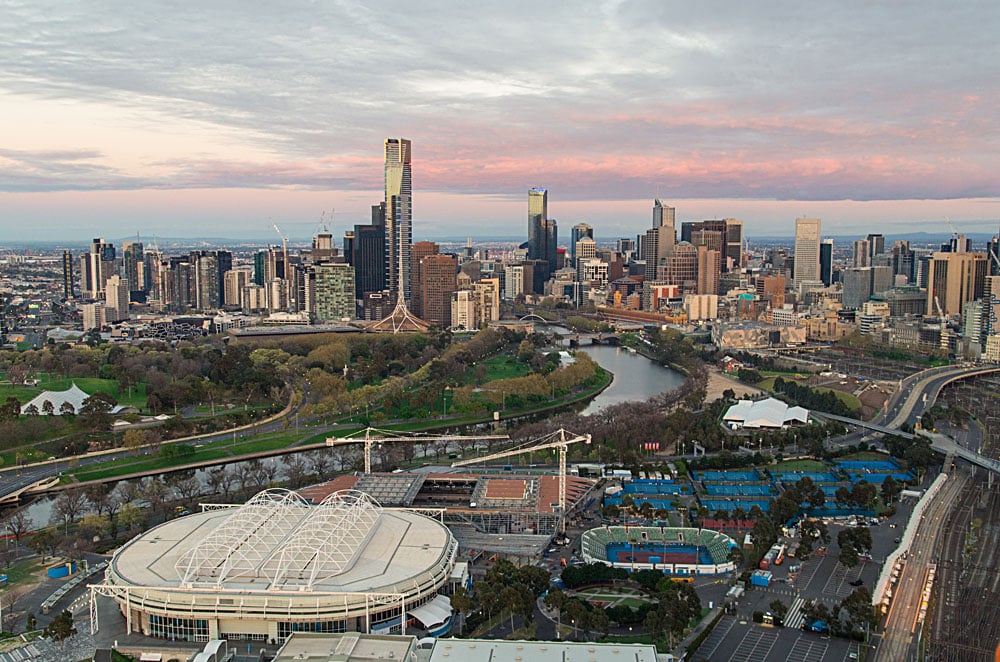
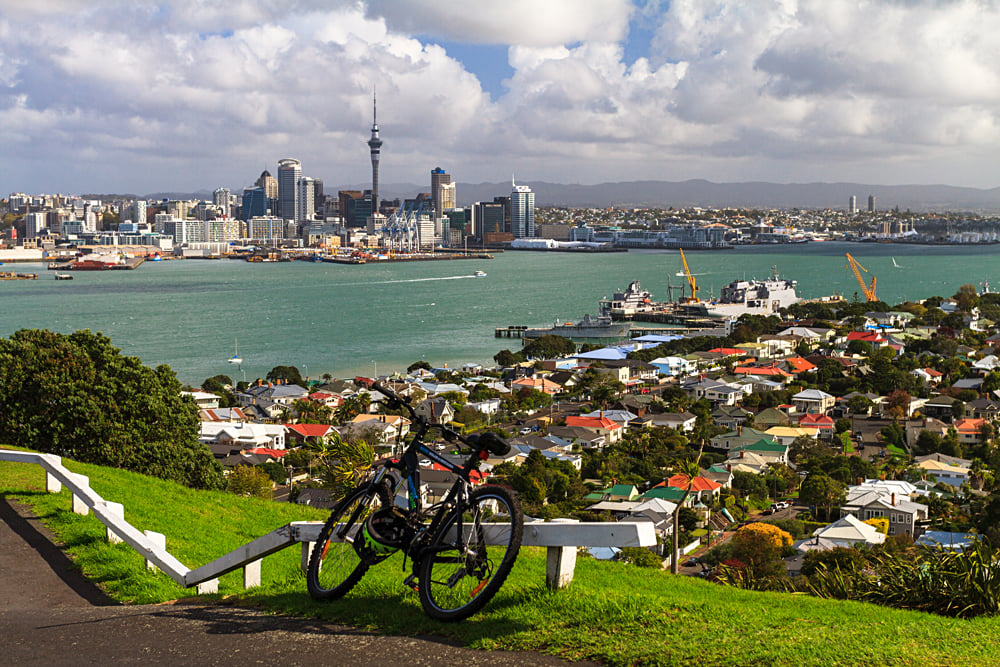
In terms of flights, again Australia happens to be more expensive. A roundtrip flight from Los Angeles to Sydney in the low season will cost around $1,800CAD while a similar flight to Auckland would cost $1,200CAD. In high season, prices jump to $2,400CAD from Los Angeles to Sydney and $1,700CAD from Los Angeles to Auckland. Of course, numbers can always vary based on availability and other events like oil prices and tax fluctuations. I’m only trying to project a general sense of the price difference between these two nations, so these numbers are by no means set in stone.
As you can see, Australia is generally more expensive than New Zealand, but there is a positive flip-side to the prices. While Australia is more expensive, it also has a larger tourism infrastructure than New Zealand. You’re more likely to find hotels and flights to Australia in the high season than you will to New Zealand. As well, local tours book up quicker when travelling to New Zealand in high season, so you’ll have to book further in advance if you’re travelling at the same time as others on a South Pacific vacation.
Landmarks
Both Australia and New Zealand have their share of landmarks, although Australia being larger and with more prominent cities, it tends to outnumber New Zealand in terms of bucket-list items.
Sydney alone has a number of world-class landmarks, namely the Sydney Opera House, which is the most celebrated work of modern architecture in the world, and the Sydney Harbour Bridge, the largest steel arch bridge in the world. Along the south coast, you’ll find cosmopolitan Melbourne, which has been ranked the “World’s Most Livable City” for most of the past decade, and the Great Ocean Road, one of the world’s premier coastal drives.
Related Articles:
Sydney Opera House – Australia’s Architectural Wonder
Australia’s Iconic Sydney Harbour Bridge
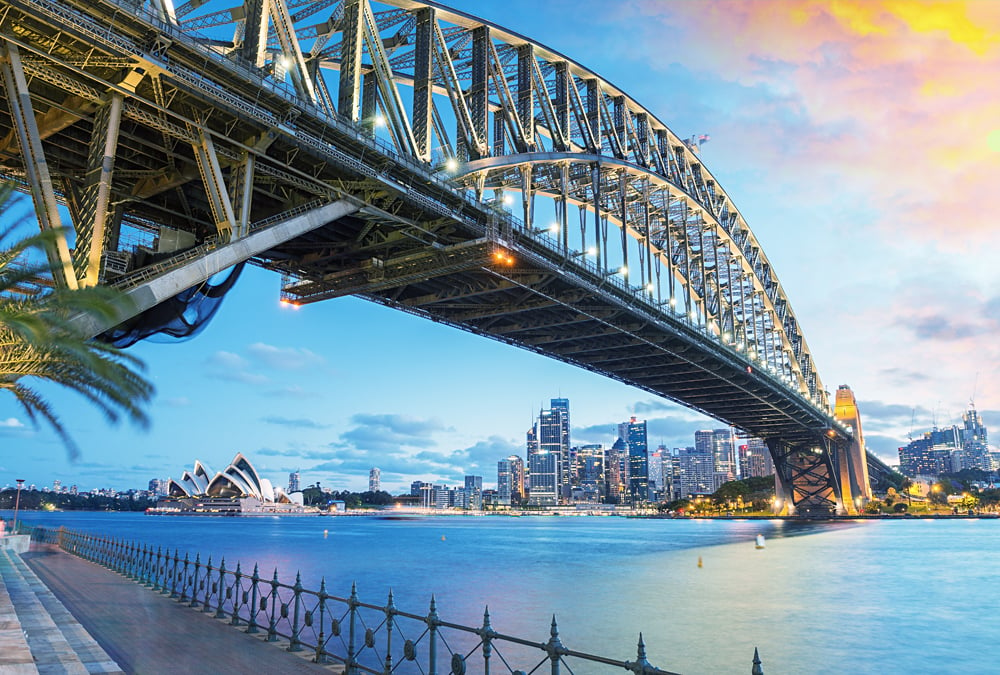
If you travel to the Red Centre of the country, you’ll find Uluru/Ayers Rock and the incredible sandstone formations, Kata Tjuta or the Olgas. As well, the Red Centre has Alice Springs, which is the quintessential vision of the Outback, with its camel ranches, helicopter doctors, and dusty climate. In terms of the ocean, Australia also has the Great Barrier Reef, the largest coral reef in the world and the planet’s largest living structure, and the Ningaloo Reef, which is largely untouched and famous for the whale sharks that migrate through its waters. Australia has seemingly no end of incredible landmarks that are famous the world over; it’s a hard country to compete with in terms of iconography.
New Zealand’s landmarks tend to be restricted to natural ones, while Australia boasts both incredible nature and world-class metropolitan icons. In New Zealand, you’ll find the Southern Alps and the incredible Franz Josef Glacier and Fox Glacier, which are magnificent demonstrations of ice. A little further down on the South Island, you’ll find Milford Sound, with the famous Mitre Peak as its centrepiece. Milford Sound is widely considered one of the most beautiful spots on the planet and is thought to be the most photographed attraction in the country.

On the North Island, you’ll find Rotorua, with its thermal pools, geysers, and bubbling mud pits. Further north, you’ll find the Bay of Islands, a collection of 140 subtropical islands in a gorgeous bay that also served as the treaty grounds between the British and Maori. In terms of city landmarks, the twin harbours of Auckland are certainly iconic, but they’re another example of natural wonders. In terms of man-made icons, New Zealand cannot match Australia.
City Life and Food
Australia has a larger population and larger cities than New Zealand, so it can outstrip New Zealand when it comes to city comforts. If you’re looking for the trendiest bars and cutting edge nightclubs, you’ll have better luck finding them in Sydney and Melbourne than Wellington or Christchurch. Sydney is particularly trendy and has plenty of hipster neighbourhoods that cater to the cutting edge. Melbourne has massive shopping centres, and Brisbane and the Gold Coast have the sort of family theme parks like Warner Bros. Movie World that only come with big cities.
However, that’s not to say that New Zealand doesn’t have cosmopolitan appeal. Auckland, in particular, can boast city infrastructure to rival much of the world, and Wellington has more than enough trendy restaurants, bars, and interesting nightlife to keep you interested during a stay on your South Pacific vacation. It’s just that New Zealand’s natural highlights tend to overshadow its cities.
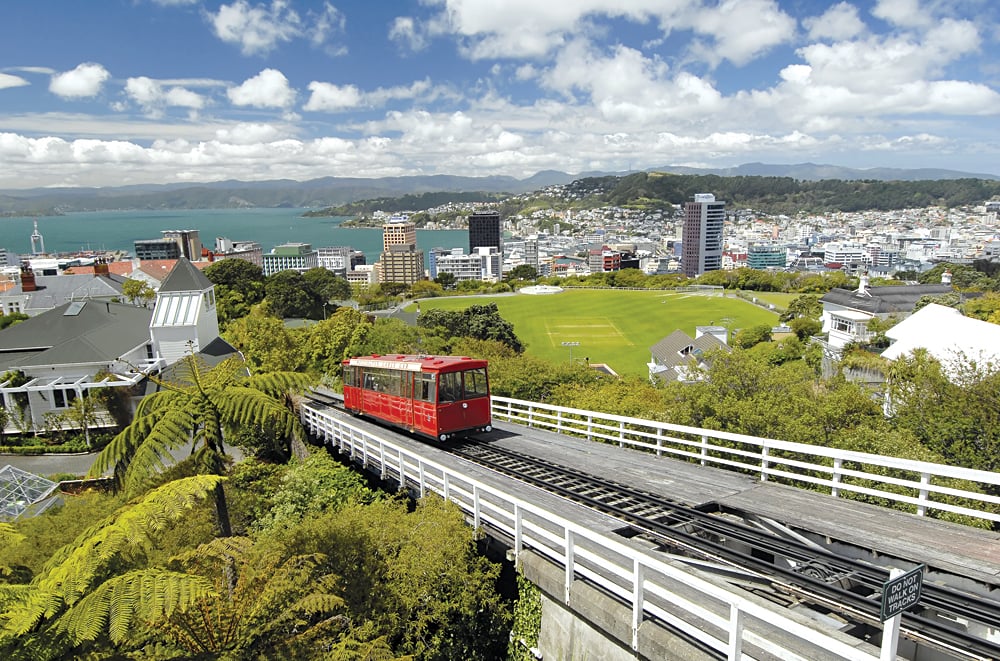
The advantages of large cities carry over into food options. While both Australian and Kiwi cuisine have a lot of similarities – for instance, they both rely largely on seafood, which is fresh and abundant in both countries – Australian food benefits from the country’s larger infrastructure as a means of attracting more innovation and culinary fusion than New Zealander cuisine. In short, Australian food in the large cities can be more cutting edge than you’d find in New Zealand. As well, there’s also the eternal appeal of Australian barbeque to seal the deal.
Activities
Both Australia and New Zealand are second-to-none when it comes to opportunity for outdoor activities, so you won’t find a specific winner in this category. Instead, you merely have to understand what each country excels at.
As Australia is warmer and has plenty of beaches and islands to explore, it’s the obvious choice when it comes to summer adventure. If you want to snorkel or scuba dive through coral gardens and alongside white-tipped reef sharks and starfish, you can go to Queensland to explore the Great Barrier Reef or Ningaloo Reef in Western Australia. If you simply want to relax on the beach, Australia is exploding with places to do so, although Bondi Beach in Sydney is a favourite. For surfing, you can head west to Perth or the Margaret River to catch the spectacular waves coming off the Indian Ocean or head to the Gold Coast or Sunshine Coast in Queensland to experience some of the most popular surfing spots on the planet.
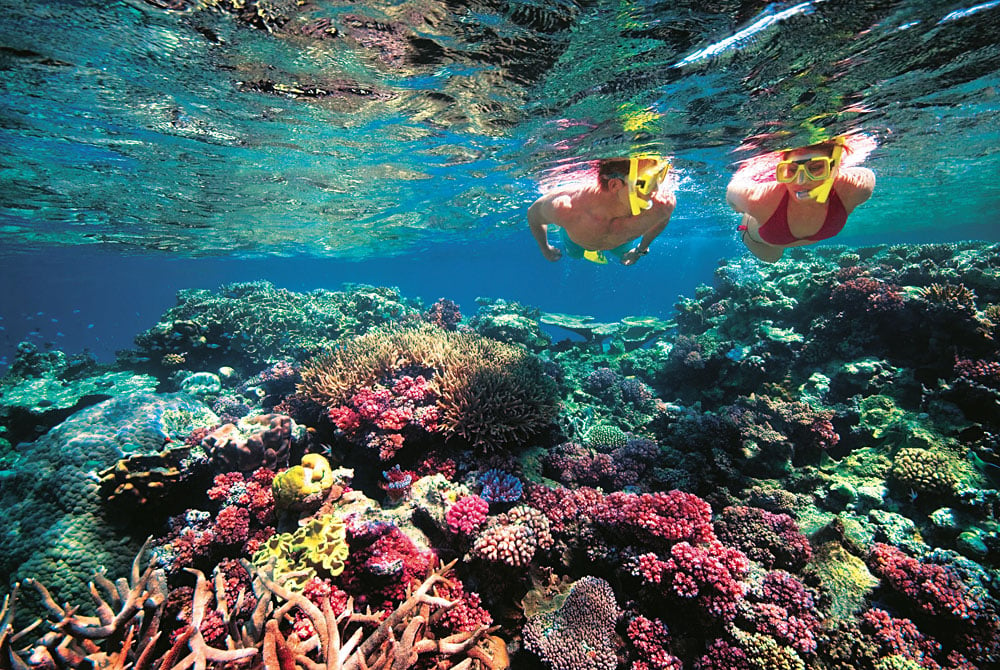
New Zealand isn’t as renowned for its beaches as Australia, although you can certainly take advantage of beach and surf across the island, such as in the Bay of Plenty. New Zealand is more famous for hiking and outdoor adventure. The city of Queenstown is often called the “Adrenaline Capital of the World,” so if you have ever wanted to skydive, bungee jump, ski-doo, or zip-line, this is a great place to get your kicks. For hiking, routes around Fox Glacier and Milford Sound are ideal to see the incredible landscape. New Zealand also has opportunity for winter sports, which aren’t really an option in Australia. You can ski or snowboard through the mountains; ice climbing Aoraki or Mount Cook is a definite option as well, although it’s not a mountain for amateurs, so be forewarned.
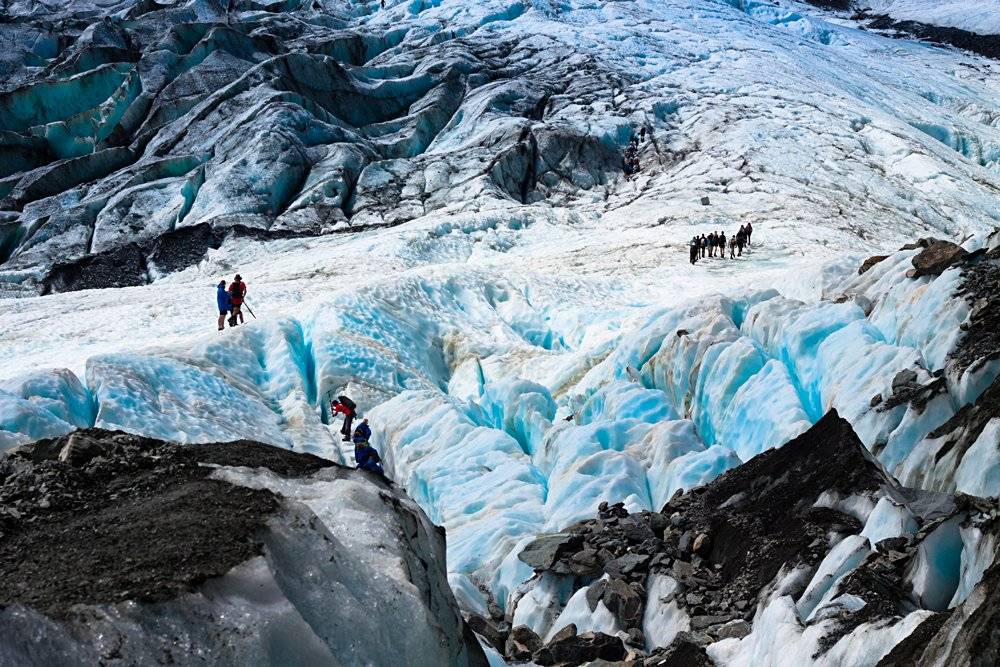
Wildlife excursions are also possible in both countries, although Australia certainly has the lion’s share of strange animals between the two. Of course, this advantage has a downside: yes, Australia has far more animals, but it also has far more dangerous animals too. Australia is the only place where you can see kangaroos, koalas, and all other manner of fascinating marsupials, but you’ll have to put up with the presence of crocodiles, snakes, and terrifying birds like the emu and cassowary. New Zealand’s wildlife is not nearly as exciting, but it is safe; in fact, the island has no natural predators, which contributed to its bird life adapting to be largely flightless, since they had no need to escape predators in the air.
So Which One is For You?
Now you’re more equipped than before to weigh the strengths of each destination and choose whether Australia or New Zealand is right for you. There’s no wrong decision between the two of them, as both countries are among the loveliest, friendliest, and most exciting on the planet.
But to briefly summarize:
- If you want warm climates, a wealth of famous landmarks, buzzing cities, fascinating animals, and plenty of opportunities to surf, scuba-dive, or suntan, head to Australia.
- If you want a trip with milder weather, a smaller area to explore, breathtaking landscapes, and the opportunity to indulge your love of the outdoors in summer and winter, New Zealand is the place to be.
At the end of the day, you’ll have to experience a South Pacific vacation to both countries to truly know which destination reigns supreme in your eyes. All I can tell you is both Australia and New Zealand are more than worthy of exploration.
Discover Australia, New Zealand or both!
When you are a Goway Globetrotter you become part of a special fraternity of travellers about whom we care very much. Our company philosophy is simple – we want you to be more than satisfied with our services.
Looking to travel to the South Pacific? Get a Free Quote by filling out the form below:
Get more travel inspiration by email.
Subscribe
2 Comments
Most Voted

Get the latest travel trends & hear about the best deals on vacations around the world.
If you’re a Globetrotter, these are the newsletters for you!
